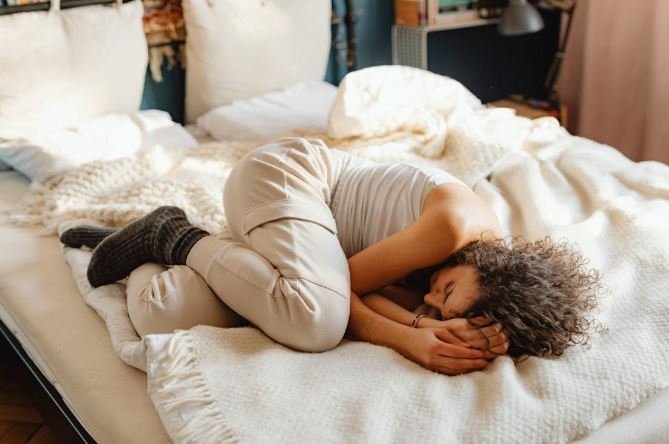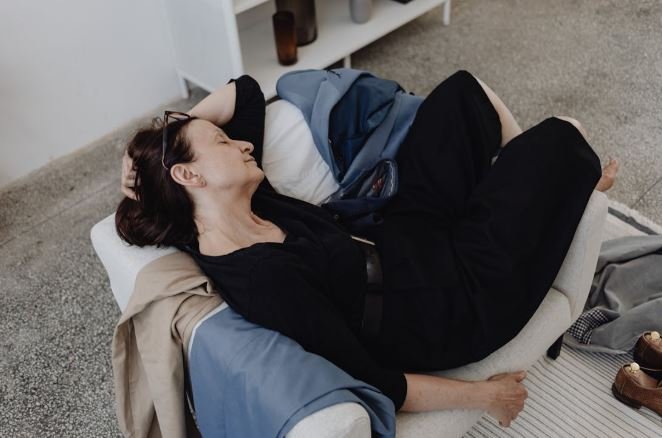Lower back pain is a common problem affecting millions of people worldwide. From lifestyle choices to injuries, there are many causes of this discomfort. However, one significant factor that many people overlook is their sleeping position. The worst sleeping position for lower back pain can significantly exacerbate the condition, leading to a vicious cycle of pain and sleeplessness. Understanding which sleeping positions can hurt your lower back and how to adjust them is crucial to improving sleep quality and reducing discomfort.

Understanding Lower Back Pain
Lower back pain can stem from various causes, including poor posture, muscle strain, herniated discs, arthritis, or stress. Sleeping positions can either alleviate or worsen these conditions. When we sleep in certain positions, the spine’s alignment can be affected, placing additional pressure on the muscles, discs, and joints in the lower back. Therefore, the worst sleeping position for lower back pain can worsen, leading to prolonged discomfort and disturbed sleep.
The Worst Sleeping Position for Lower Back Pain: Sleeping on Your Stomach
One of the worst sleeping positions for lower back pain is sleeping on your stomach. While it may feel comfortable for some, this position can place unnecessary strain on your spine. Here’s why:
- Spinal Misalignment: When you sleep on your stomach, your spine is forced into an unnatural curve. The neck is typically turned to one side, which can cause additional stress on the cervical spine. This misalignment spreads throughout the back and increases pressure on the lower back.
- Pressure on the Spine: The stomach position flattens the natural curve of your lower back, forcing the muscles and ligaments in this area to overextend. This can lead to inflammation, muscle fatigue, and chronic discomfort.
- Muscle Strain: Stomach sleeping can cause tension in the lower back muscles, making them tight and sore. If you already suffer from lower back pain, this position will likely aggravate the condition, making it harder to recover.
How to Avoid the Worst Sleeping Position for Lower Back Pain
If sleeping on your stomach is your preferred position, it’s essential to make adjustments to protect your lower back. Here are some steps you can take to avoid the worst sleeping position for lower back pain:
- Try Sleeping on Your Side: Transitioning to side sleeping is a much better choice for your lower back. This position helps maintain the natural curve of your spine and relieves pressure on your lower back. Place a pillow between your knees to keep your hips aligned.
- Sleep on Your Back with Support: If side sleeping isn’t comfortable, try lying on your back with a pillow under your knees. This creates a neutral spine position that reduces pressure on your lower back and supports the natural curve.
- Use a Suitable Mattress: A medium-firm mattress can be the key to avoiding the worst sleeping position for lower back pain. Too soft a mattress can lead to improper spinal alignment, while one that is too firm may not provide adequate support for your body.
- Invest in Proper Pillows: The right pillow can make a big difference in maintaining spinal alignment. For side sleepers, a thicker pillow that fills the gap between your head and mattress can help. For back sleepers, a thinner pillow will prevent your neck from arching too much.

Why the Worst Sleeping Position for Lower Back Pain Matters
Your sleep quality plays a significant role in managing lower back pain. If you continue to sleep in the worst position for lower back pain, the discomfort may worsen over time. Poor sleep can also affect the healing process and hinder muscle recovery. Adjusting your sleeping posture can contribute to better alignment, less pain, and more restful sleep, all of which are crucial for overall well-being.
Other Tips to Relieve Lower Back Pain While Sleeping
While avoiding the worst sleeping position for lower back pain is essential, there are additional measures you can take to further reduce discomfort during sleep:
- Stretch Before Bed: Incorporating gentle stretches before bedtime can help loosen up tight muscles in your lower back. This can relieve tension and make sleeping more comfortable.
- Use Heat or Cold Therapy: Applying a heating pad or cold pack to the lower back before bed can help reduce inflammation and alleviate pain. Choose whichever treatment works best for you.
- Maintain a Healthy Weight: Carrying excess weight can put added strain on your lower back. Maintaining a healthy weight through proper diet and exercise can reduce the pressure on your spine and improve sleep quality.

While it’s essential to avoid the worst sleeping position for lower back pain, it’s equally important to adopt positions that can help alleviate discomfort and support spinal health. For those struggling with lower back pain, sleeping positions that reduce back pain can provide significant relief. By choosing positions that promote proper spinal alignment and reduce pressure on the lower back, you can improve both your sleep quality and overall well-being. Be sure to explore these beneficial sleeping habits to support your journey toward pain relief and restful sleep.
Conclusion
The worst sleeping position for lower back pain is often one that involves sleeping on your stomach. This position can cause spinal misalignment, muscle strain, and added pressure on the lower back. By making simple adjustments to your sleeping habits, such as sleeping on your side or back with appropriate support, you can reduce the risk of further aggravating your lower back pain. With these changes, you can experience better sleep and improved comfort, helping your body recover and function more effectively during the day.
Remember, addressing the worst sleeping position for lower back pain is a step toward achieving better overall health and well-being. So, make the necessary adjustments to your sleep posture and give your lower back the rest it deserves.



